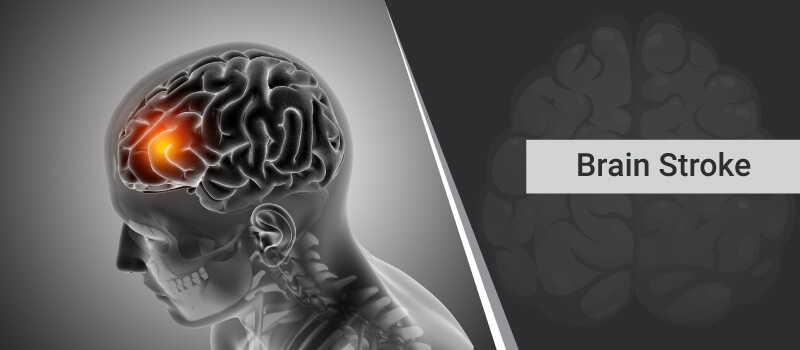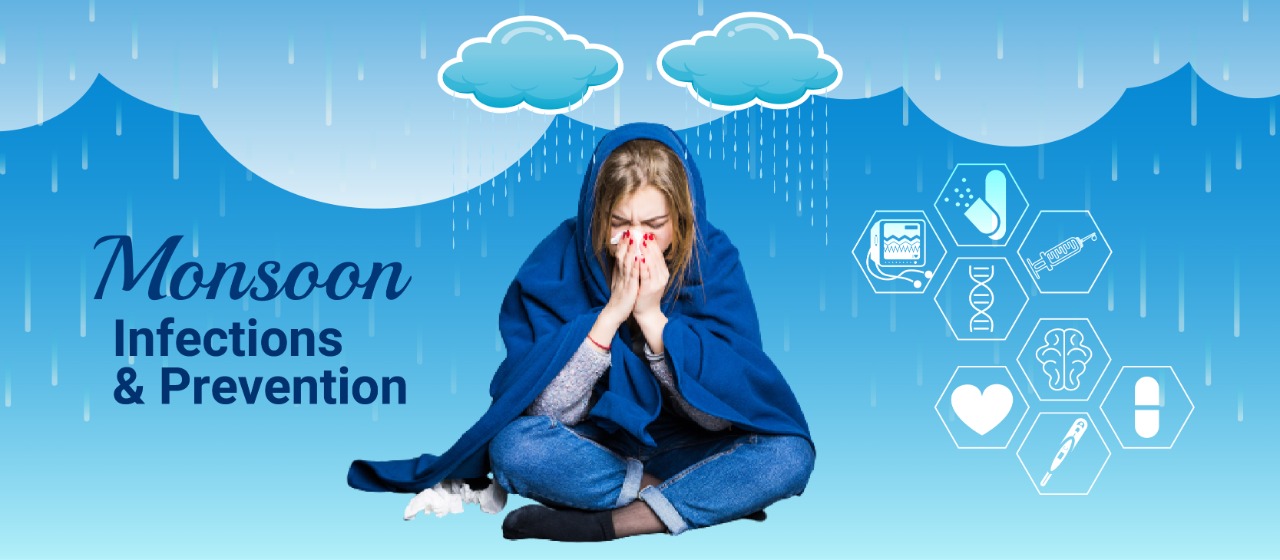A Unit of Asian Institute of Gastroenterology
All You Need To Know About Brain Stroke

Stroke is a heterogeneous disorder comprising of clinical subtypes and many risk factors, also alluded to as cerebrovascular disorders (CVDs). Increase in the global burden of stroke in developed and developing countries has been alarming.
India has increased by almost 100 percent in the past few decades. Around 1.8 million people in India suffer from a stroke every year and it is only early treatment that can reduce morbidity and mortality.
A stroke occurs when the blood supply to part of the brain is suddenly interrupted or when a blood vessel in the brain bursts, spilling blood into the spaces surrounding brain cells. Brain cells die when they no longer receive oxygen and nutrients from the blood or there is sudden bleeding into or around the brain.
Symptoms of Brain Stroke
- Sudden numbness or weakness, especially on one side of the body
- Confusion or trouble speaking or understanding speech
- Sudden trouble seeing in one or both eyes
- Trouble with walking, dizziness, or loss of balance or coordination; or sudden severe headache with no known cause.
Risk factors
Although they are more common in older adults, strokes can occur at any age. Understanding the factors that increase your risk of a stroke and recognizing the symptoms can help to prevent a stroke. Receiving early diagnosis and treatment may improve your chances for complete recovery.
Controllable or treatable risk factors for stroke include:
- Smoking
- High blood pressure
- Carotid or other artery diseases
- Diabetes
- High blood cholesterol.
- Physical inactivity and obesity
Uncontrollable risk factors include:
- Age: People of all ages, including children, have strokes. But the older you are, the greater your risk of stroke.
- Heredity.
- Prior stroke or heart attack.
Types of Stroke
Ischaemic stroke
This happens when a clot blocks an artery that carries blood to the brain.
It may be caused by:
- A blood clot which has formed in the main artery to the brain
- A blockage, caused by a blood clot, air bubble or fatty lump, which forms in a blood vessel somewhere in the body and is carried in the bloodstream to the brain
- A blockage in the tiny blood vessels in the brain.
Hemorrhagic stroke
A hemorrhagic stroke happens when a blood vessel ruptures in the brain. It may be caused by: a blood vessel which bursts inside the brain.
The effects of stroke
It is important to understand that no two people are affected by stroke in the same way. The effect of a stroke on a person depends on which part of the brain has been affected and how much damage has been caused.
Physical
The following physical effects of a stroke can sometimes be quite disabling. However, these will improve with time and the physiotherapist and Neuro will work with you to assist your recovery.
Muscle weakness
Weakness in the arm, leg or face is probably the most common effect caused by a stroke. Weakness can vary in its severity. It can be in one part of the body or may effect one whole side of the body. This is called hemiparesis.
Muscle tightness
Certain muscles can become abnormally stiff and tight after a stroke and this is referred to as spasticity or increased tone. This can make movement of an arm or leg difficult and can cause some pain or discomfort.
Co-ordination
Co-ordinating movements after a stroke can be difficult. This can be due to weak muscles but can also be caused if the stroke has affected your cerebellum which is the area that coordinates all our movements. This can make it difficult to walk and undertake delicate tasks.
Altered sensation
There are various ways in which a stroke can affect your senses. One might be less sensitive to touch or on contrast may have increased sensitivity which can affect a range of senses such as hearing, touch, taste and sensitivity to pain. A patient with stroke are likely to express abnormal and unpleasant sensations such as the feeling of burning, tingling or numbness.
Vision
Sometimes stroke can affect vision. It can take time for your eyesight to settle, so it is recommended that you wait six months after the stroke before having your eyes tested.
Common Diagnostic Tests Brain and Vascular Imaging.
- CT Scan
- CT Angiography (CTA)
- Magnetic Resonance Imaging (MRI)
- EEG (electroencephalogram) a test used to find problems related to electrical activity of the brain. It tracks and records brain wave patterns.
Take away Message
If you suspect you have stroke symptoms, you must seek emergency medical care. Clot dissolving drugs can only be given within the first few hours after signs of a stroke appear. Early treatment is one of the most effective ways to reduce the risk of complications and long-term damage.
Prevention is possible regardless of whether you prevent the first stroke or try to avoid the second stroke. Medications can help reduce the risk of blood clots that cause strokes. Work with your doctor to find prevention strategies suitable for you, including medical procedures and lifestyle changes.
Palliative Care and Rehabilitation together helps in curing the stroke along with the help of our Neurosciences team at AIG Hospitals.












